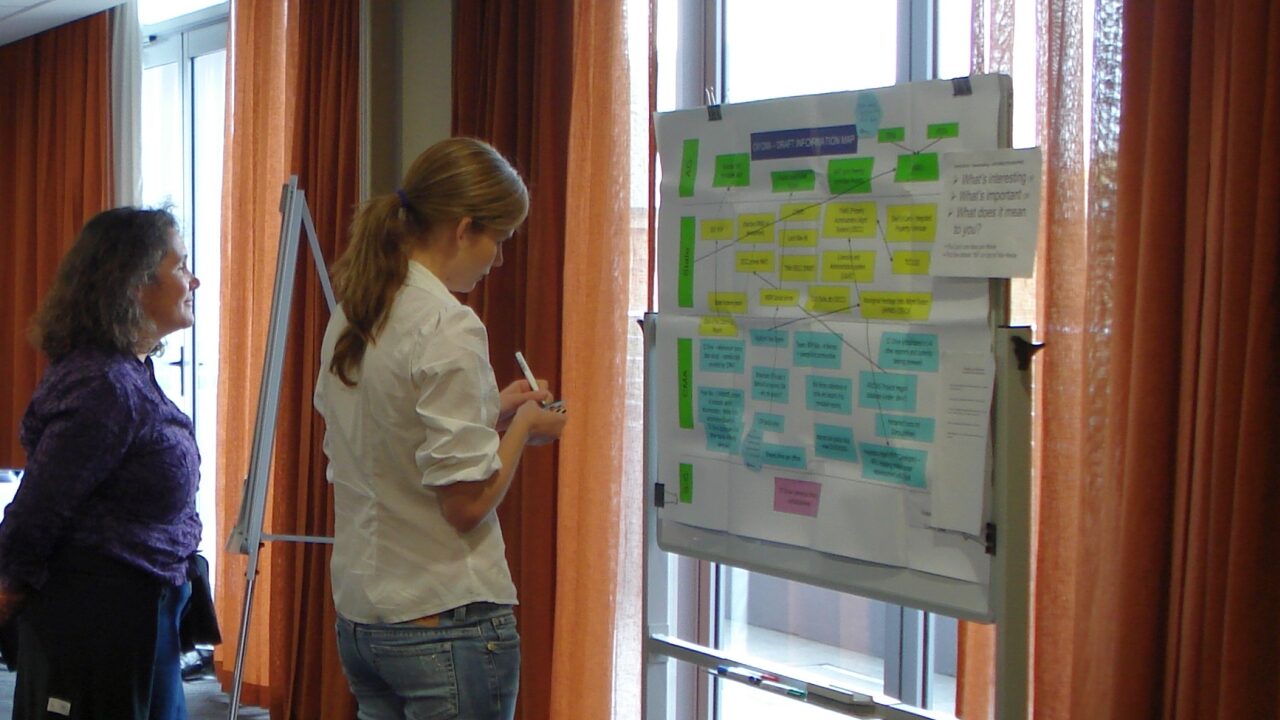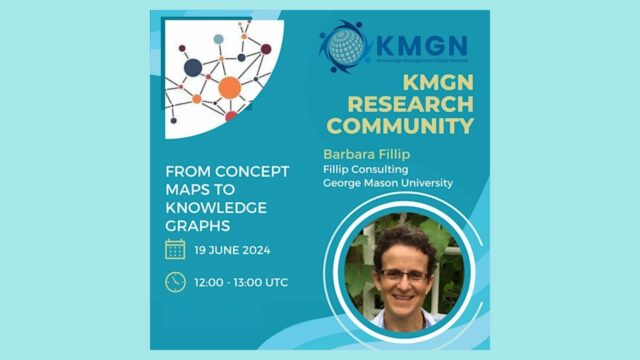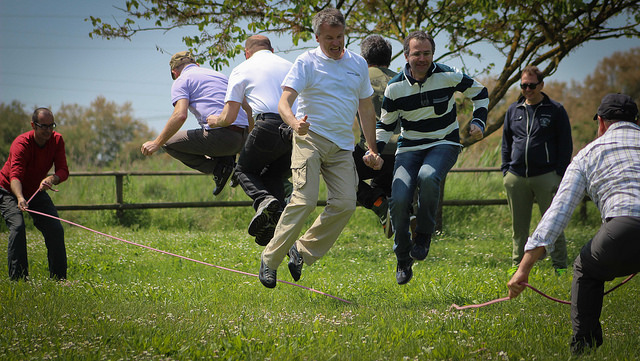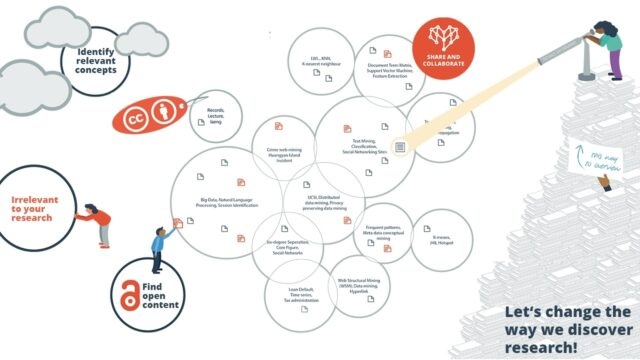
A comprehensive summary of knowledge mapping techniques
Knowledge mapping is a popular knowledge management (KM) approach used to identify knowledge in organizations and networks.
Different knowledge mapping techniques have been developed for various purposes. A 2013 study1 by researchers in the Department of Information Systems at Universiti Teknologi Malaysia has comprehensively reviewed these different techniques.
Fifteen knowledge mapping techniques were identified. The table below presents the results of the review, including what the researchers see as the relationship of each technique with three types of knowledge2:
- know what – the kinds of facts or events worth pursuing
- know how – an understanding of the processes that generate particular facts or events
- know why – an understanding of the principles underlying particular facts or events.
For each knowledge mapping technique in the table, I have located and added a reference link for further information. Most of the reference links include advice on how to use the technique.
| Mapping technique | Description | Know what | Know how | Know why |
| 1. Mind maps | Mind mapping is a representation of ideas and the relation between them. Mind maps consist of a network of concepts in relation to each other.
Further information: Mind mapping3. |
Yes | Yes | Yes |
| 2. Concept maps | Developed by Prof. Joseph D. Novak, the concept map is a structured way to help groups to develop conceptual frameworks used in planning or evaluation. Concept mapping is different from mind mapping and the two should not be confused.
Further information: The Theory Underlying Concept Maps and How to Construct Them4. |
Yes | Yes | Yes |
| 3. Argument maps | Invented by J.H. Wigmore, argument maps help in the analysis of legal arguments. This class of technique decomposes an argument into claims, reasons, and objections. It is also used for preparing and presenting arguments and for developing critical thinking skills, both individually and collectively.
Further information: Argument mapping5. |
Yes | No | No |
| 4. Causal maps | Causal maps represent cause-effect relations in a directed graph.
Further information: A Review of the Causal Mapping Practice and Research Literature6. |
Yes | Yes | Yes |
| 5. Knowledge asset maps | Knowledge asset maps enable organizations to identify their critical knowledge assets and areas, and the interrelations between them.
Further information: Knowledge Asset Road Maps7. |
Yes | No | No |
| 6. Social network analysis | Social network analysis (SNA) studies, measures and maps any knowledge processing element in a network of connected nodes (people, groups, organizations, computers, etc.) and captures the flow of knowledge among them.
Further information: Introduction to Social Network Analysis8. |
Yes | No | No |
| 7. Topic maps | Topic maps are a formal model for describing knowledge structures and using them to improve the findability of information.
Further information: Topic Maps9. |
Yes | Yes | Yes |
| 8. Folksonomy | The term ‘folksonomy’ comes from a combination of ‘folk’ and ‘taxonomy’ and refers to a way of sorting content through user-generated tagging.
Further information: Folksonomy Definition and Wikipedia10. |
Yes | No | No |
| 9. Process knowledge mapping | Process knowledge mapping identifies current knowledge and needed knowledge in business processes.
Further information: APQC’s Process-based Knowledge Map: Description and Instructions11. |
Yes | Yes | Yes |
| 10. Functional knowledge mapping | A functional knowledge map illustrates each position in an organization; the skills, experiences, and academic education of the individual occupying that position; and the relationships between those individuals and knowledge resources. It has similarities with process knowledge mapping, but functional knowledge mapping’s main focus is on people.
Further information: The only accessible reference source for this technique is the 2009 paper A Framework For The Selection Of Knowledge Mapping Techniques12 where there is just one paragraph describing this technique. This suggests the need for further research in regard to this technique. |
Yes | Yes | Yes |
| 11. Competency mapping | Competency mapping is a process of identifying key competencies for an organization and the jobs and functions within it, and then using it for job evaluation, recruitment, training and development, performance management, succession planning, etc. It has similarities with functional knowledge mapping, but competency mapping’s focus specifically relates to the concept of competency.
Further information: Competency mapping in knowledge based organizations13. |
Yes | No | No |
| 12. Information flow analysis | An information flow diagram shows how information is communicated (or “flows”) from a source to a receiver or target, through some medium. The medium acts as a bridge, a means of transmitting the information.
Further information: Information flow diagram14. |
Yes | Yes | Yes |
| 13. Petri nets | A Petri net is a graphical tool for the description and analysis of concurrent processes which arise in systems with many components (distributed systems). | Yes | Yes | Yes |
| 14. Semantic maps | Semantic maps seek to represent the relationships of documents and explain the data economically with semantics, which is the branch of linguistics and logic concerned with meaning.
Further information: The semantic mapping of words and co-words in contexts16. |
Yes | Yes | No |
| 15. Cognitive maps | A cognitive map seeks to show how people see their environment, capturing their comprehension, learning, or retained knowledge. Cognitive maps can facilitate mutual understanding through the integration of the different maps of team members.
Further information: Cognitive mapping17. |
Yes | Yes | Yes |
Header image source: Interacting with a knowledge asset map as part of the knowledge strategy process for natural resource management organisations. Source: Land & Water Australia, CC BY-SA 4.0.
References:
- Balaid, A. S. S., Zibarzani, M., & Rozan, M. Z. A. (2013). A comprehensive review of knowledge mapping techniques. Journal of Information Systems Research and Innovation (JISRI), 3(1), 61-66. ↩
- Garud, R. (1997). On the distinction between know-how, know-what, and know-why. Advances in strategic management, 14, 81-102. ↩
- Open Polytechnic. (n.d.). Mind mapping. The Open Polytechnic of New Zealand Ltd. Retrieved from https://www.openpolytechnic.ac.nz/current-students/study-tips-and-techniques/study-skills/mind-mapping/ ↩
- Novak, J. D., & Cañas, A. J. (2006). The theory underlying concept maps and how to construct them. Florida Institute for Human and Machine Cognition, 1(1), 1-31. ↩
- University of Hong Kong. (n.d.). Argument mapping. Critical thinking web. Retrieved from https://philosophy.hku.hk/think/arg/complex.php ↩
- Scavarda, A. J., Bouzdin-Chameeva, T., Goldstein, S., Hays, J., & Hill, A. (2004, April). A review of the causal mapping practice and research literature. In Second world conference on POM and 15th annual POM conference (Vol. 30). ↩
- Macintosh, A., Filby, I., & Tate, A. (1998). Knowledge asset road maps. Proceedings. of the 2nd International Conference on Practical Aspects of Knowledge Management (PAKM98), Basel, Switzerland, 29-30 Oct. 1998. ↩
- Bandyopadhyay, S., Rao, A. R., Sinha, B. K., & Sinha, B. K. (2011). Models for Social Networks with Statistical Applications (Vol. 13). Sage. ↩
- Pepper, S. (2010). Topic maps. Encyclopedia of library and information sciences, Third Edition. Taylor & Francis. ↩
- Vander Wal, T. (2005, November 2). Folksonomy Definition and Wikipedia. Retrieved from https://www.vanderwal.net/random/entrysel.php?blog=1750 ↩
- APQC. (2021, January 29). APQC’s Process-based Knowledge Map: Description and Instructions. Retrieved from https://www.apqc.org/resource-library/resource-listing/apqcs-process-based-knowledge-map-description-and-instructions ↩
- Jafari, M., Akhavan, P., Bourouni, A., & Roozbeh, H. (2009). A Framework for the selection of knowledge mapping techniques. Journal of Knowledge Management Practice, 10(1). ↩
- Kansal, J., Jain, N., Satyawali, P. K., & Ganju, A. (2012). Competency mapping in knowledge based organizations. International Journal of Management (IJM), 3(2), 279-290. ↩
- Wikipedia, CC BY-SA 3.0. ↩
- Petri, C.A., & Reisig, W. (2008). Petri net. Scholarpedia, 3(4):6477. ↩
- Leydesdorff, L., & Welbers, K. (2011). The semantic mapping of words and co-words in contexts. Journal of informetrics, 5(3), 469-475. ↩
- Eden, C. (1988). Cognitive mapping. European Journal of Operational Research, 36(1), 1-13. ↩
Also published on Medium.





